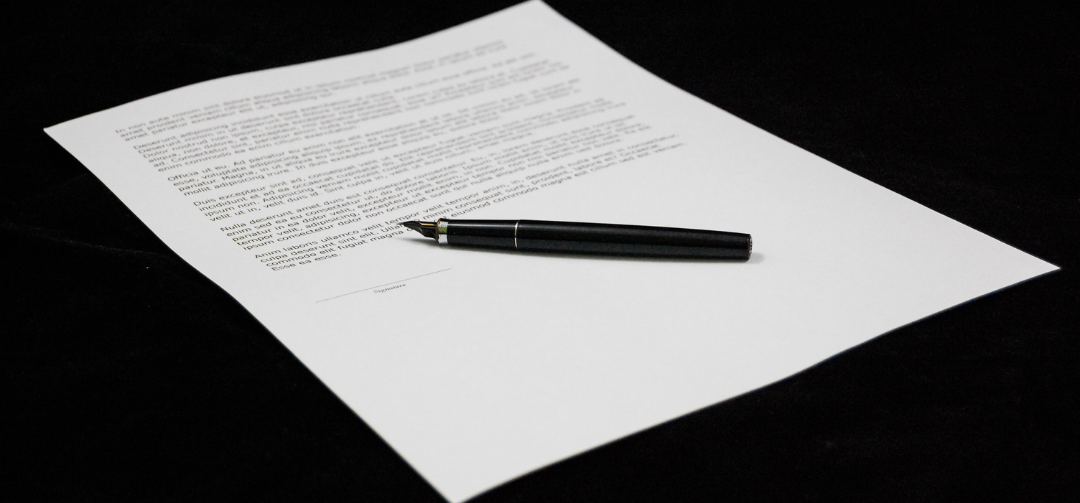Shareholder Agreement
A contract used as a point of reference for the rights and obligations of equity holders in a business.
A stockholder agreement, also called a shareholder agreement, is a contract used as a point of reference for the rights and obligations of equity holders in a business. It encompasses within its domain details such as shareholder information.

The shareholder agreement's purpose is to ensure that the rights of shareholders are protected while also allowing shareholders a say in the company. These agreements also let stockholders choose which external parties become stockholders and cover minority positions.
The list of parties to the agreement, showing their names, addresses, and shares held in the company, is generally displayed along with their signatures.
Valuation of the company is agreed to and initiated by all parties and is usually updated from time to time via unanimous shareholder votes.
Shareholders could be a person or an organization; whatever the case may be, it is recommended that all parties take part in the agreement.
Details about the governance of the board of directors are often listed. Information such as who will be sitting on the board of directors, their compensation, what matters would require board approval, etc., are listed on the agreement.
What should be included in the shareholder agreement?
The stockholder agreement serves to protect and defend the rights of shareholders.
The agreement contains a section detailing the policies for pricing shares. It also includes a date, the number of shares issued, and information about the shareholders.

Privileges for current shareholders to buy new shares to maintain the proportion of the business that the existing shareholders own. The agreement also contains policies for events such as new issues, mergers, acquisitions, etc.
It also permits shareholders to decide what external parties can be stockholders in the future while also helping defend minority positions. Rules and agendas of various kinds of meetings, such as special meetings, AGMs, etc., are also noted.
Suppose the corporation plans to declare an IPO in the future. It is worth deciding and mentioning in the agreement what will happen if the company goes public.
Usually, a stockholder agreement will contain a termination clause that would terminate the contract upon the company's going public.

A right of first refusal may also be included, requiring the selling equity holder to sell their share to other shareholders before a third party. By the ROFR provision, if the remaining stockholders deny the proposal, the subject shares can be sold to a third party.
Various other vital details could be included, such as-
- clauses that approve changes in the number of directors/officers in the business.
- Policies on paying dividends to the shareholders of the company.
- Approving any significant changes in the management structure.
- Clauses can even be included for what should be done when entering debt agreements, projects, investments, etc.
What parties are included in the contract?
A shareholders' agreement is essential when a company is formed, and more than one individual will invest capital into the business. Stockholder agreements should be compiled and agreed upon during the company's inception to mitigate future shareholder conflicts.

Stockholder agreements should be compiled and agreed upon during the company's inception to mitigate future shareholder conflicts.
A shareholders' agreement should be used whether a business has a lot of shareholders or just a few. It can be helpful even if the shareholders are family or close friends.
The shareholders in the stockholder agreement own a portion of the company. Shares usually are categorized into A and B-type shares. A-Type Shares are considered voting shares, whereas B-shares are considered non-voting shares.
Shareholders could be a person or an organization; whatever the case may be, it is recommended that all parties take part in the agreement.
Stockholders could own equal shares or a variety of percentages based on the proportion of equity they have invested into the business.
These contracts include the shareholders' names, the company's names, definitions, governance policies, etc.
The agreement often includes the place of residence of shareholders as well as several shares owned by each of them.
Typically, these details also display the position trust management holds about the equity holders of the corporation.
Directors
The term "director" is a company position given to individuals in senior-level management. These individuals form the board of directors and are responsible for managing the top-level affairs of the organization, creating business strategies, and proposing implementation methods.

Directors are elected or appointed by the stockholders, and sometimes the directors are shareholders. The authority of the directors can be limited via the stockholder agreement.
It is essential to distinguish between the CEO and the directors—the difference between a chief executive officer and a director in a corporation.
It is not noticeable to some, but specific organizations have both CEOs and directors. In comparison, a chief executive officer acts for the firm's public image and is the highest-ranking professional in a corporate environment.
Directors, meanwhile, are responsible for managing the day-to-day operations of a company.
Officers
Officers in a company make up the hierarchy of the organization. Officers do not necessarily own shares in the business but play an important role in the company, so it is essential to include them in the stockholder agreement.

Officers manage the company's day-to-day affairs and include roles like the president, vice president, and treasurer. The directors decide their duties and responsibilities and have them in the company by-laws.
In general, these duties and liabilities reflect the position of trust that directors and officers hold concerning the corporation and its owners, the shareholders. Because the company's management's authority (directors and officers) is so all-encompassing, the law imposes various checks and balances on them.
Typically, these responsibilities display the position trust management holds about the equity holders of the corporation.
While many corporate officers' responsibilities are prescribed under the law, other duties are outlined in the stockholder's agreement, acting as an instruction manual for many management decisions.
There are various kinds of corporate officers. Some popular ones include the CEO or Chief Executive Office, the CFO or Chief Financial Officer, the COO or Chief Operational Officer, and even secretaries maintaining and keeping the corporation's records.
Example
It is encouraged that entrepreneurs setting up their startups should create a shareholder agreement for the company. It ensures clarification of the rights and responsibilities of both shareholders and management.

The organization's founders may also want to outline who can be future shareholders, policies for ceasing to become a shareholder, rules for the transfer of shares and details on board members, and how the company's management should be conducted.
The agreement also helps resolve future disputes as it serves as a written standard. An example of a shareholder agreement by Mike Volker from Simon Fraser University in Vancouver, British Columbia, illustrates what a generic shareholder agreement could look like.
As illustrated in the sample, such contracts could include the shareholders' names, the company's name, definitions, governance policies, etc.
As shown in the example, the contract often includes the place of residence of the shareholders as well as the number of shares owned by each of them.
Typically, these details also display the position trust management holds about the equity holders of the corporation.
While many corporate officers' responsibilities are prescribed under the law, other duties are outlined in the stockholder's agreement, acting as an instruction manual for many management decisions.
Why are Shareholder Agreements important?
A well-composed written agreement allows for certainty and clarity and defends the interests of equity holders if issues arise in the future. The specific details of the contract can be decided upon, and each party's duties and privileges are outlined.

A written and agreed-upon document can be beneficial if one shareholder has issues with the terms of the agreement or if certain parties struggle to meet their obligations due to circumstances.
Constructing this sort of contract is essential for the business in the short, medium, and long term. Written agreements can be valuable to a business and should be treated like an asset. More specifically, a firm should know what its obligations are under contracts.

The stockholder agreement is significant during the sale or transfer of shares as it can help block external and unwanted parties from gaining a foothold in the company.
For example, a contract might contain a clause that dictates a change of ownership policies. These will protect the existing shareholders if voting shares are sold to an external group.
A few primary reasons contributing to the importance of shareholder agreements include:
- Decision-making.
- Restriction on share ownership policy.
- Access to more capital.
- The legal protection of existing shareholders in the event of share sales.
Decision Making
A shareholders' meeting allows shareholders to obtain information about the corporation's business and make appropriate business decisions. A shareholder's right to attend and vote at a session depends on the rights attached to the shares that person holds.

The agreement gives preference to majority shareholders where decisions can be made even with a marginal majority vote (51%). There are exceptions; however, in some corporations, two-thirds of the vote is required.
The stockholder agreement contains information on the percentage required to decide. The deal might also be detailed in exceptional cases when all shareholders need a unanimous decision.
This is crucial in cases where one individual or organization owns the majority of the shares and can help safeguard the rights of minority shareholders by allowing them a part in decision-making.
Restriction on share ownership policy
Limitations on who can become a stockholder are essential to a shareholders' agreement. Especially in startups, it is crucial to have shareholders who get along and can make decisions about the business, which would be ideal for the firm.

Most firms need approval from the board of directors when it comes to the authorization of shares; however, depending on the board members, this requirement may sometimes be detrimental to minority shareholders.
As time passes, the personal situation of each stockholder can change by a large degree. It can have a huge ripple effect on the company if a contract is not in place.
The shares in a company are considered assets. Therefore, upon the death of a shareholder, the deceased's shares become part of their estate and are subject to the deceased's testamentary wishes.
Suppose a shareholder agreement is not drafted, and no contract dictates what will happen to a stockholder's stocks after death. In that case, the spouse or child of the deceased shareholders could overnight become a business partner.

Such situations would be seen as undesirable for the company, and a compulsory buy-out provision can be detailed in the contract, which would state that in the event of a shareholder's death, the remaining shareholders, or the business, will be forced to buy the deceased's shares.
In addition to the buy-sell provision, a method for pricing the shares at the time of the shareholder's death can also be outlined.
A stockholders' agreement can include other restrictions on transfers and ownership.
These restrictions can include forcing a shareholder who is an employee to sell his shares if he is no longer working, is disabled, or has been convicted for some reason.
Funding
Whether at the beginning of a business or during its operations, there will come the point where the company will need to raise capital.
Generally, business capital includes financial assets owned by your company that can be used for both growth and maintenance of the firm's operations. Capital and cash are not the same. Money can allow you to grow your business and churn out higher profits.

A stockholders' agreement can outline how the business will access funds and whether the stockholders are responsible for contributing these funds according to their relative interest in the company.
Furthermore, when not all stockholders are willing or able to contribute capital when required, a stockholders' agreement can set out preferential interest rates for those who provide funds.
The contract can even limit the directors of the business from declaring any dividends until the amount owing to the shareholder has been absolved unless the stockholder's consent has been taken.
In cases where the company will be taking loans from financial institutions such as a bank or a third-party lender, an agreement can deal with whether shareholders are obligated to give personal guarantees and what will happen if a shareholder cannot provide private security.
Do you need a lawyer for a Shareholder Agreement?
When dealing with a closely held business with two or more shareholders, it is always paramount that a shareholders agreement is drafted.

If all shareholders jointly hold the contract to draft it, it is recommended that each shareholder cross-reference the document with their legal team.
If you are a holder from one shareholder, you need to advise others that you are not acting for them and seek independent legal advice to draft these agreements.
The role of a lawyer in the company is to provide legal advice to their clients, so they know about their rights and responsibilities.
When hired by a company, a corporate lawyer represents the corporation's interests as an entity rather than the company's shareholders. This concept might be bewildering, but companies are treated like individuals under the law.
The majority of corporate lawyers seldom enter courtrooms. Instead, most of their work is focused on helping the corporation avoid legal action.

Their duties include reviewing, revising, and negotiating legal contracts on the company's behalf, which could involve everything from minor lease contracts to multi-million dollar mergers.
Agreeing can be difficult, especially for a startup, as more complicated contracts can cost up to $10000. Such costs might be difficult for a young business to choke up.
However, since a shareholder agreement is a contract, hiring a lawyer who understands a contract's legal obligation and conditions is recommended.
A lawyer may be able to guide the corporation in drafting and analyzing the agreement for the betterment of the company and the individuals who hold shares there.
Do family businesses also need a Shareholder Agreement?
A family-owned business is an association between two distinct but conjoined entities—the business and the family—with unclear boundaries. Often, this sets it apart from regular companies.

Family businesses may include multiple members of the family in various business roles. One individual or a couple could have started the company, but now the responsibilities of governing the company may fall to the descendants of these two individuals.
Conflicts can arise, especially in later generations, as the number of family members involved in the business grows from one generation to the next.
People's communication with family members may be improper in business situations. Similarly, personal rivalries within the family may carry over into the workplace to the firm's detriment.
To succeed, a family business must keep lines of communication open, use strategic planning tools, and, most importantly, a shareholders agreement should be drafted.
A stockholders' agreement increases the chance of maintaining both waves of peace within the family and ensuring the prosperity of the business through its triumphs and tribulations.
Drafting a contract in the early days of the business and revising it as the situation changes would minimize problems within the family business by guiding in financial matters, decision-making, management, and, importantly, the distribution of shares within the family.
- A shareholder agreement is a contract used as a point of reference for the rights and obligations of equity holders in a business.
- A stockholders’ agreement can outline how the business will access funds and whether the stockholders are responsible for contributing these funds according to their relative interest in the company.
- It also allows shareholders to decide what outside parties may become future shareholders and protects minority positions.
- It identifies the company and its shareholders.
- It contains a list of goals the corporation has
- Drafting a contract in the early days of the business and revising it as the situation changes would minimize problems.
Authored and researched by Omair Reza Laskar | LinkedIn
Free Resources
To continue learning and advancing your career, check out these additional helpful WSO resources:




or Want to Sign up with your social account?